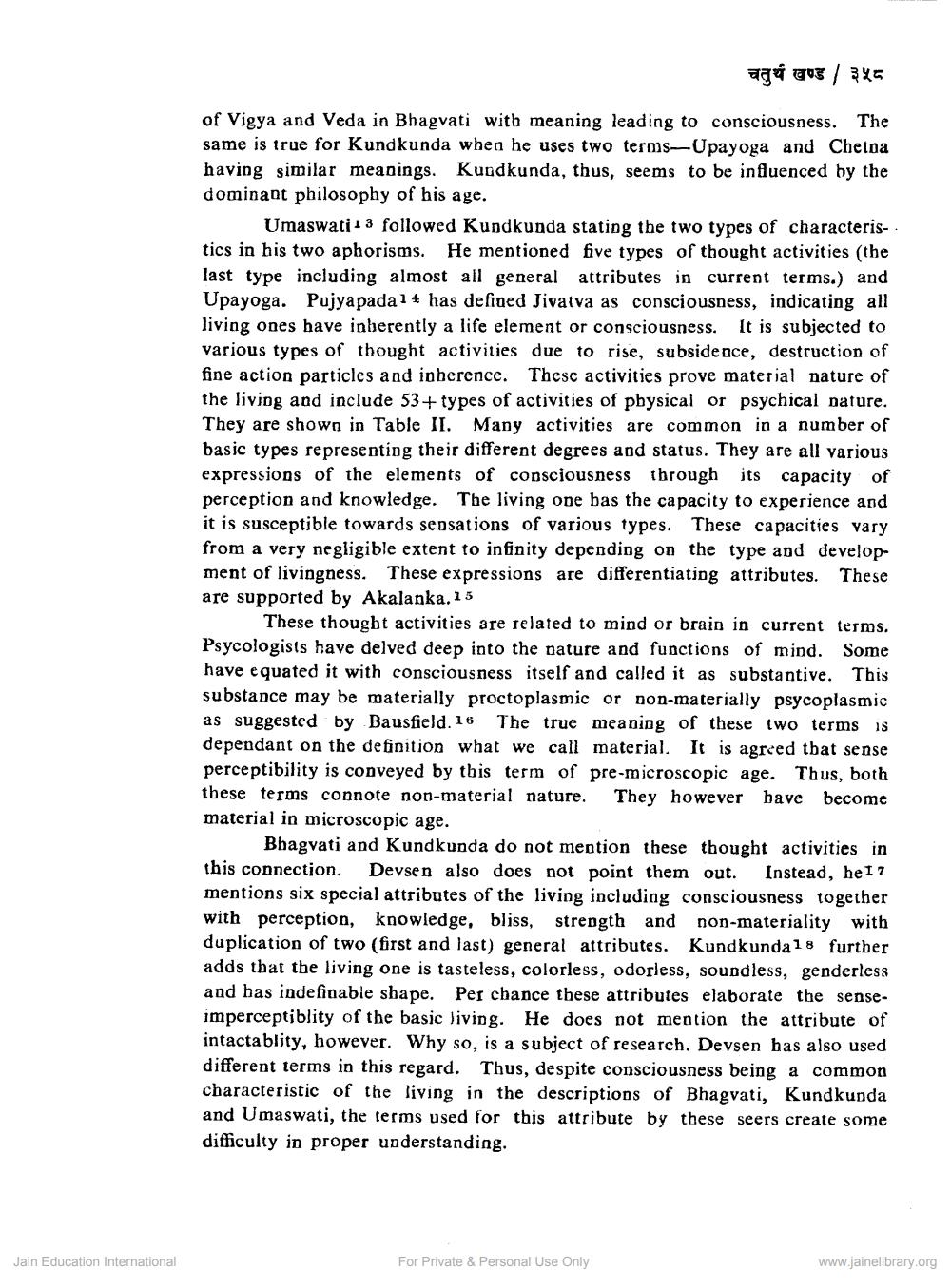Book Title: Defiition of Living in Jain Cannons An Evaluation Author(s): N L Jain Publisher: Z_Umravkunvarji_Diksha_Swarna_Jayanti_Smruti_Granth_012035.pdf View full book textPage 3
________________ चतुर्थ खण्ड / ३५८ of Vigya and Veda in Bhagvati with meaning leading to consciousness. The same is true for Kundkunda when he uses two terms-Upayoga and Chetna having similar meanings. Kuidkunda, thus, seems to be influenced by the dominant philosophy of his age. Umaswati 13 followed Kundkunda stating the two types of characteris-. tics in his two aphorisms. He mentioned five types of thought activities (the last type including almost all general attributes in current terms.) and Upayoga. Pujyapada 14 has defined Jivatva as consciousness, indicating all living ones have inherently a life element or consciousness. It is subjected to various types of thought activities due to rise, subsidence, destruction of fine action particles and inherence. These activities prove material nature of the living and include 53+ types of activities of physical or psychical nature. They are shown in Table II. Many activities are common in a number of basic types representing their different degrees and status. They are all various expressions of the elements of consciousness through its capacity of perception and knowledge. The living one bas the capacity to experience and it is susceptible towards sensations of various types. These capacities vary from a very negligible extent to infinity depending on the type and development of livingness. These expressions are differentiating attributes. These are supported by Akalanka. 15 These thought activities are related to mind or brain in current terms. Psycologists have delved deep into the nature and functions of mind. Some have equated it with consciousness itself and called it as substantive. This substance may be materially proctoplasmic or non-materially psycoplasmic as suggested by Bausfield. 16 The true meaning of these two terms is dependant on the definition what we call material. It is agreed that sense perceptibility is conveyed by this term of pre-microscopic age. Thus, both these terms connote non-material nature. They however have become material in microscopic age. Bhagvati and Kundkunda do not mention these thought activities in this connection. Devsen also does not point them out. Instead, he 17 mentions six special attributes of the living including consciousness together with perception, knowledge, bliss, strength and non-materiality with duplication of two (first and last) general attributes. Kundkunda 18 further adds that the living one is tasteless, colorless, odorless, soundless, genderless and has indefinable shape. Per chance these attributes elaborate the senseimperceptiblity of the basic living. He does not mention the attribute of intactablity, however. Why so, is a subject of research. Devsen has also used different terms in this regard. Thus, despite consciousness being a common characteristic of the living in the descriptions of Bhagvati, Kundkunda and Umaswati, the terms used for this attribute by these seers create some difficulty in proper understanding. Jain Education International For Private & Personal Use Only www.jainelibrary.orgPage Navigation
1 2 3 4 5 6 7 8 9 10 11 12 13 14 15 16 17 18 19
